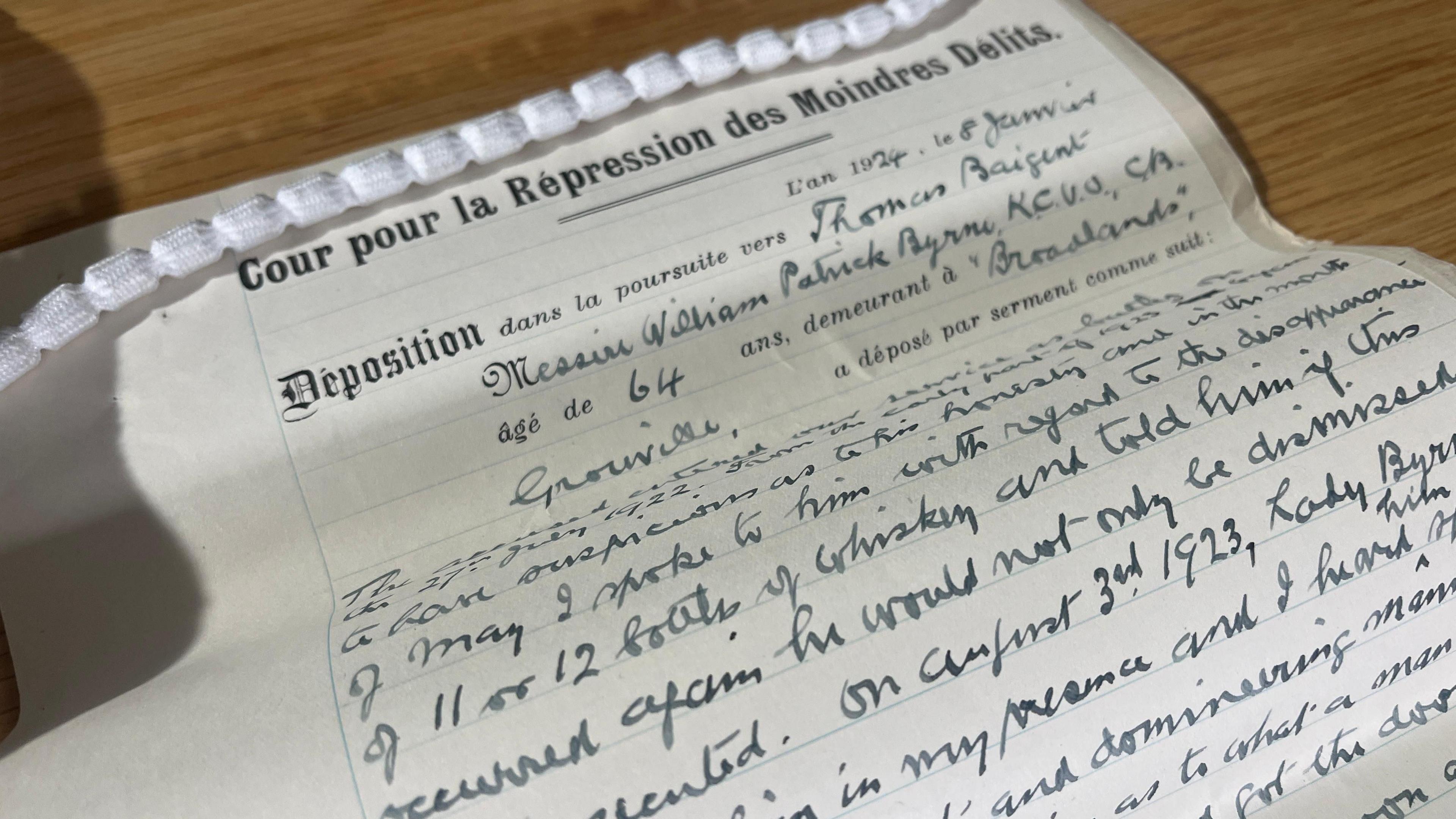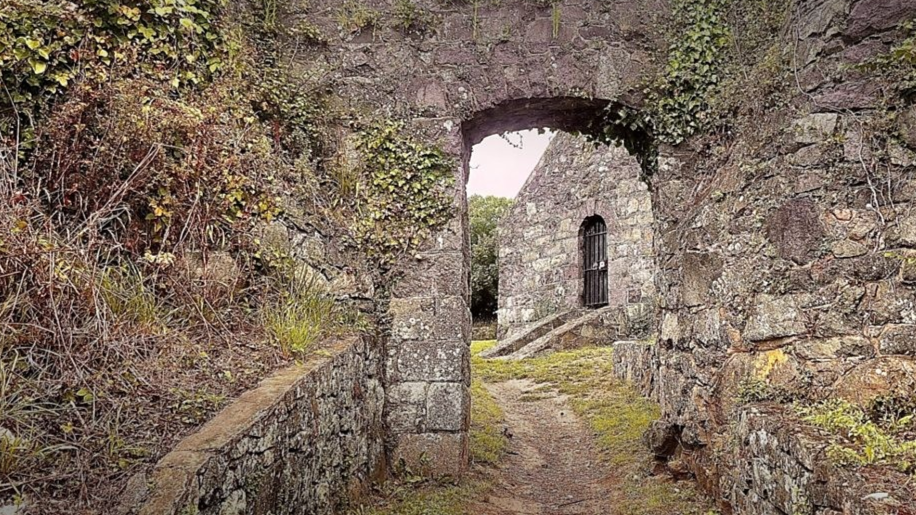The twice president and the kidnapped Guernsey boy
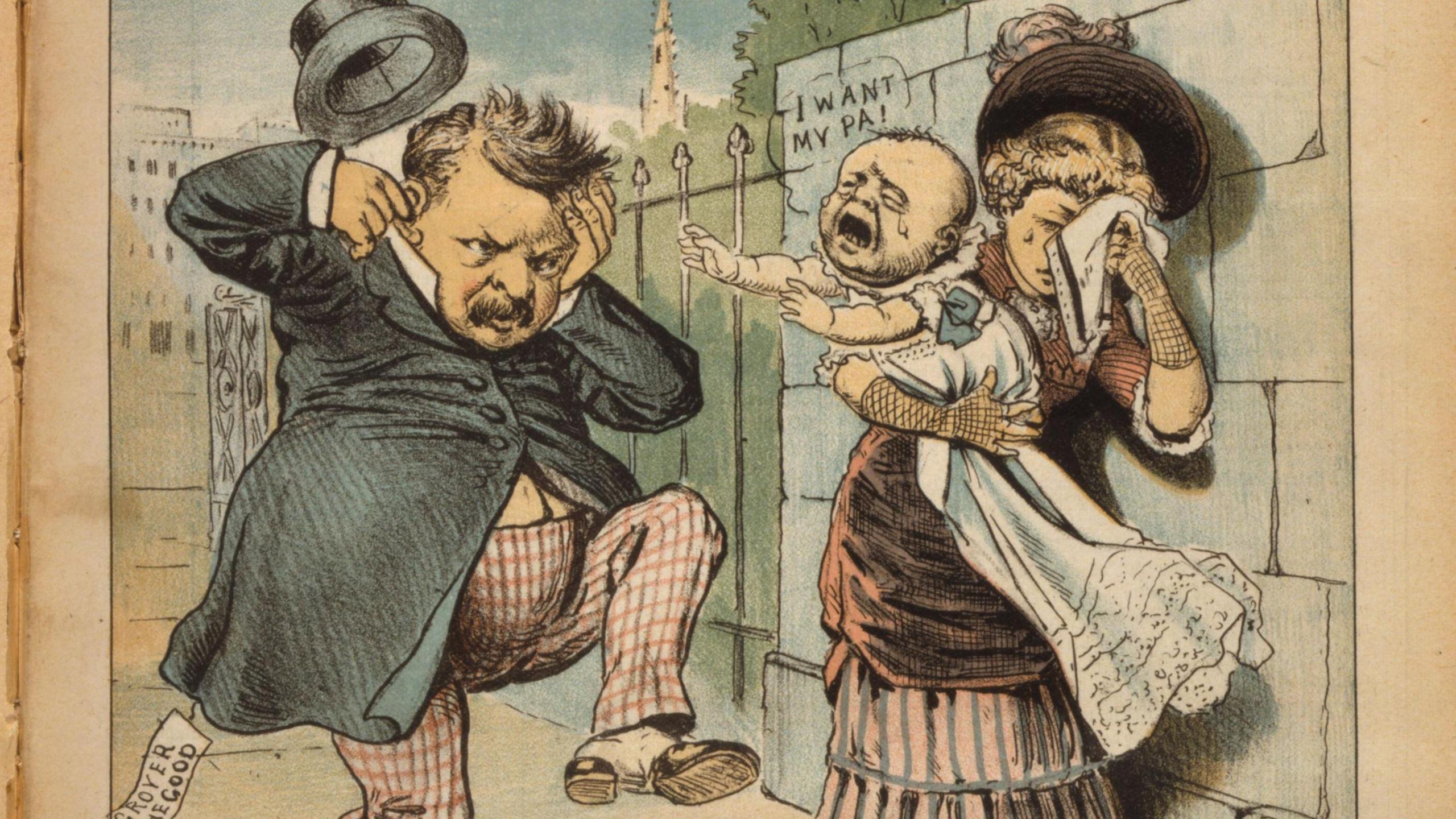
President Grover Cleveland is descended from a man who was reputedly taken against his will from Guernsey to Nova Scotia as a boy
- Published
When Donald Trump is sworn in on 20 January he will become only the second person to serve two non-consecutive terms as US president.
The first, Grover Cleveland, is descended from a man who was reputedly kidnapped from the Channel Island of Guernsey as a boy in the 1700s and sold into servitude in Nova Scotia.
President Cleveland's great, great grandfather Richard Falley Senior, is listed on American documents - this was before US independence from Britain - as being born in either 1711 or 1712 on the "Isle Guernsey".
So how did a small bailiwick boy end up in the land of the free - and is there any truth to the tale of kidnap?
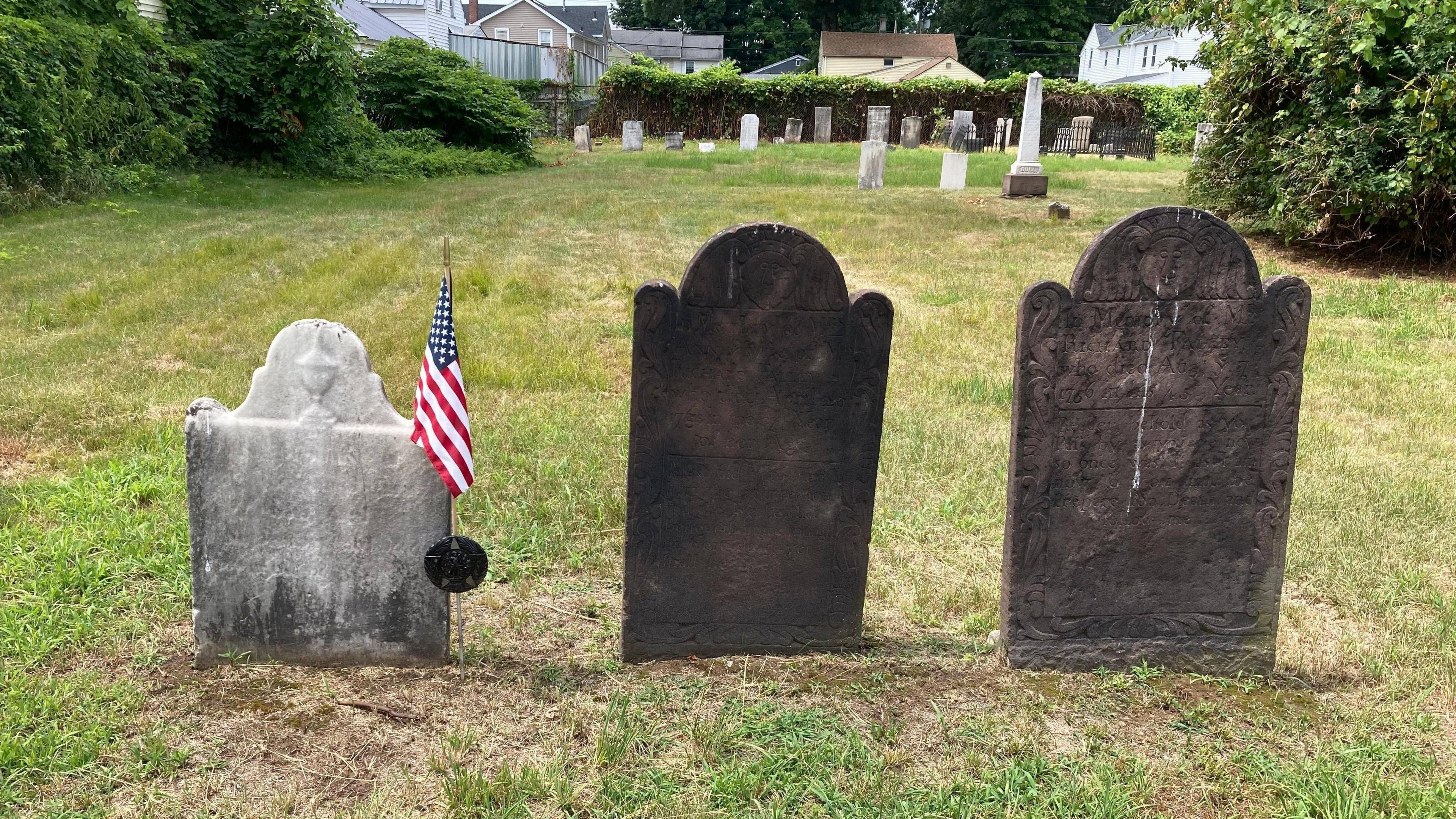
Richard Falley Sr is buried alongside his wife Ann Lamb and son Richard Jr
In a quiet corner of Massachusetts the word Guernsey is inscribed on a near-black headstone.
The grave, in Westfield, Hampden County, belongs to Richard Falley Sr - born 1711, died 7 August 1756.
The story goes that Falley Sr was among a group of Guernsey schoolboys lured on to a ship before being kidnapped and taken to Nova Scotia. Some said by pirates, others by sailors.
A family genealogy said: "When he was eight years of age a French man of war touched at the island and a whole school, himself included, was invited on board to take dinner in the cabin.
"When they came on deck the ship was out at sea, and the children were taken to Nova Scotia, and left there, to settle that new country."
His grandson, Russell Falley, wrote in an 1831 letter: "My grandfather (Richard Falley) was a native of the Isle of Guernsey.
"When a young child he was going to school with some other children. They were delayed by some sailors on board a boat by the promise of presents and were put on board their vessel."
Another version of the story, from a 1910 newspaper, had him playing on a beach on the south of the island, when three sailors snuck up, grabbed him and rowed him out to their ship.
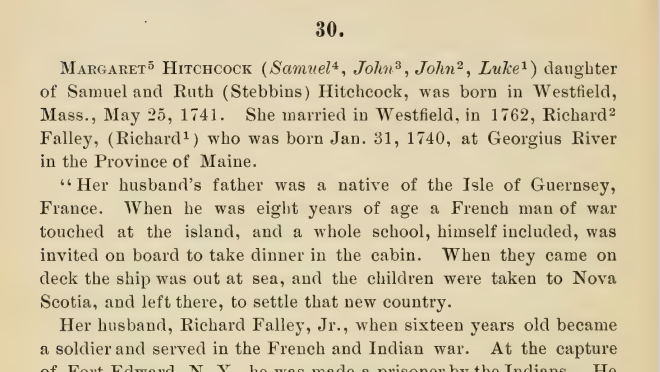
One account has an eight-year-old Richard Falley's entire school class being kidnapped by a French man of war ship
Though much in Falley Sr's story is known, aspects of his early life remain uncertain; subject to the perhaps-faulty memory of a small boy and details which may have changed as the story got retold through generations.
Sarah Ferbrache, from the Priaulx Library in Guernsey, said there may be another explanation to kidnap - transportation.
The nearby island of Alderney had a 1670 order, external that parents of children over seven years old who could not support them "should hand over such children to be sent to Guernsey, and from there to New England".
Anyone helping them if they refused would be punished.
Vast unsettled wilderness
The Falley name is likely to be an Americanised version of a Channel Islands surname like Falle or Falla, according to Massachusetts historian Robert R Madison who wrote a biography of his son, Richard Falley Junior.
Falley Sr ended up serving in the Maine militia before settling with his wife in Westfield in 1752, where he built a homestead.
Even compared to 18th Century Guernsey with a population of less than 20,000, Westfield would have felt isolated and remote, Mr Madison said.
The town had 107 households at the time in an area of "primeval forest" roughly 50% larger than Guernsey, he said.
"Western New England was a vast unsettled wilderness - but, a great place for a family with limited resources to settle," he said.

Richard Falley Jr ran a secret armoury during the American War of Independence and fixed muskets at the Battle of Bunker Hill for George Washington's troops
Falley Sr's eldest son, Richard Falley Jr, shared more than a name with his father - he too was captured and taken to the north of the continent.
At 16 he joined the provincial army, part of the British forces in North America.
He was captured by indigenous troops during the siege of Fort Edward and taken to Canada, where he was reportedly sold by tribesmen for 16 gallons of rum.
Later becoming a gunsmith, Falley Jr served under George Washington at the Battle of Bunker Hill, one of the first conflicts of the American War of Independence.
He commanded a company repairing the muskets of American soldiers in the heat of battle, Mr Madison said.
Falley Jr later built a secret armoury next to the house his father built, making guns for the continental army throughout the war, hidden in the foothills of the local mountain.
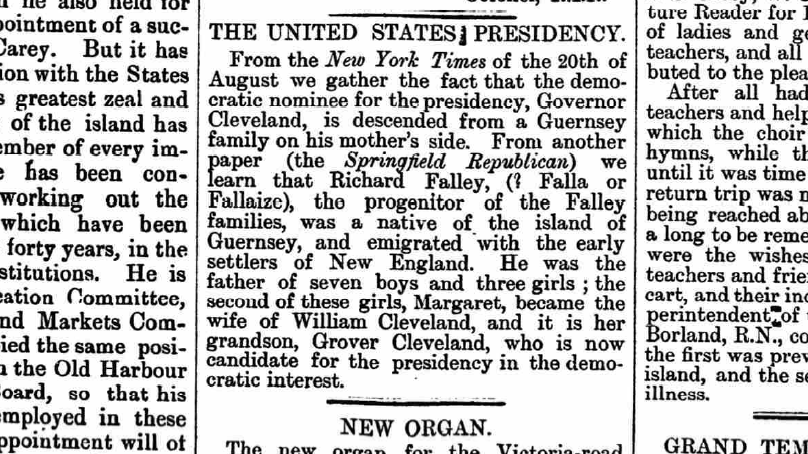
In September 1884, Guernsey's Star newspaper reported that several US papers had covered presidential candidate Grover Cleveland's connection to the island
A hands-off president
Known as Grover the Good, Falley Sr's great, great grandson was regarded as an honest, hard-working politician who believed in small government.
Cleveland first became US president in 1885 after a tight campaign where both sides traded blows over scandals.
He became the only president to marry in office - to 21-year-old student Frances Folsom, the youngest first lady in history.
But in contrast to his highly-popular wife, Cleveland's first term was marred by unpopular decisions - from blocking pensions for Civil War veterans to supporting lower tariffs on foreign goods.
After losing the next election he returned to New York to practice law, before being winning the 1892 election on a platform of reducing the cost of living.
But at the start of his second term the US economy collapsed and President Cleveland's popularity never recovered. He chose not to stand for re-election.
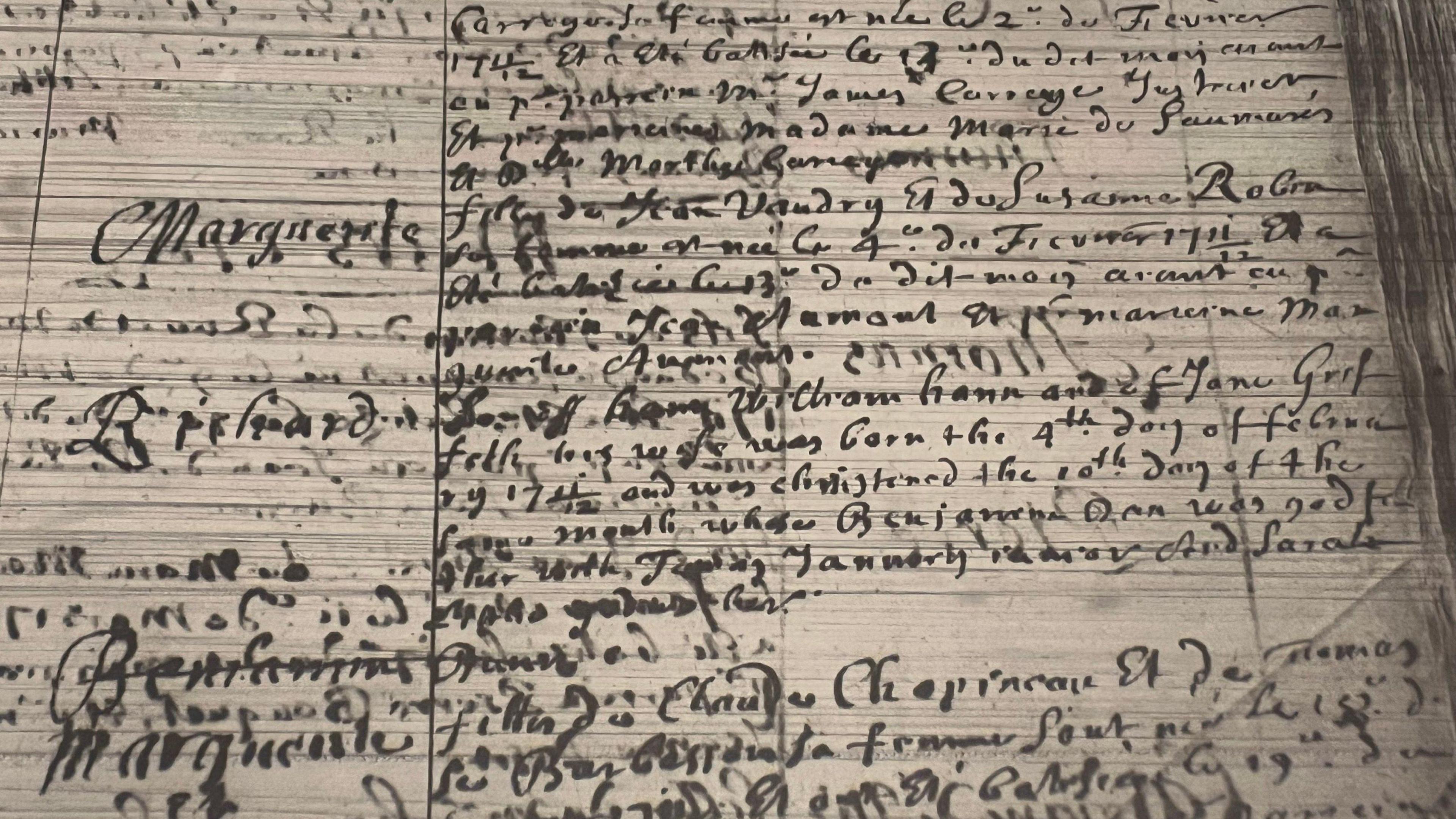
Hand-written baptism records written on parchment have often deteriorated over time, making it hard to find specific names
Falle, Falla, Faille and Failaize have all been suggested as Falley Sr's original surname, but which - if any - he used is unknown - making it hard to track down any documentary evidence.
Priaulx Library's record of baptisms does not list a Richard Falley from the time, but Ms Ferbrache said it was "not a conclusive negative result, especially given the confusion over the surname".
Even in America, Falley sometimes appears as Faly in the records.
Guernsey's parish records were written in French, with hard-to-read handwriting, while their physical condition has deteriorated over time - often drastically.
Falley Sr was baptised as an adult in 1727, Mr Madison said, which could indicate he was not baptised as a child, though this would have been exceptionally rare at the time; more likely he forgot his baptism.
"I would assume Falley had no idea what parish he was born in [as he left Guernsey as a child]," said Mr Madison.
There is also a chance he was born in Jersey as Falle was a more common surname there, Ms Ferbrache said.

Frederick Falley Phillips said he would be "absolutely fascinated" to prove his family's links to the Channel Islands
One branch of the modern-day family said their childhood stories supported the theory Falley Sr was born in Jersey.
Architect Frederick Falley Phillips, from Illinois, is a descendant of Falley Jr's son Daniel.
His grandmother, Margaret Dickson Falley, was a noted genealogist, external and visited the Channel Islands in the 1950s for research.
In a 1954 article about Falley Sr she said she had uncovered "circumstantial evidence" in parish records that he came from Jersey's Falle family, and could trace his ancestry as far back as 1274.
Her handwritten notes, kept in a collection at Northwestern University, external, suggest Falley Sr's father may have been Aaron Falle from the parish of St Saviour in Jersey.
DNA or documents
Mr Phillips said his grandmother told him Falley Sr had been visiting from Jersey when he was captured.
"The story Mimi told, he was visiting Guernsey from Jersey and walking down the street with some other kids," he said. "The kids were lured together onto this boat, fed a meal that put them to sleep and they woke up and were at sea.
"She didn't talk about how she found that out and I'm not sure how accurate that is, but that's the story I remember."
His wife, Linda, who has been researching the family history, said she "wondered what happened to the other kids - it's intriguing".
Mr Phillips said he planned to map his DNA and would be "very interested" to see if there were any matches with Aaron Falle's living relatives in Jersey.
He said he would be "absolutely fascinated" to be able to prove he was related to a modern-day Falle in Jersey or Guernsey whether by discovering a document or by a DNA test.
"I would love to know - and I would be happy to do anything I can to elucidate the story."
Follow BBC Guernsey on X, external and Facebook, external. Send your story ideas to channel.islands@bbc.co.uk, external.
Related topics
- Published7 February 2024
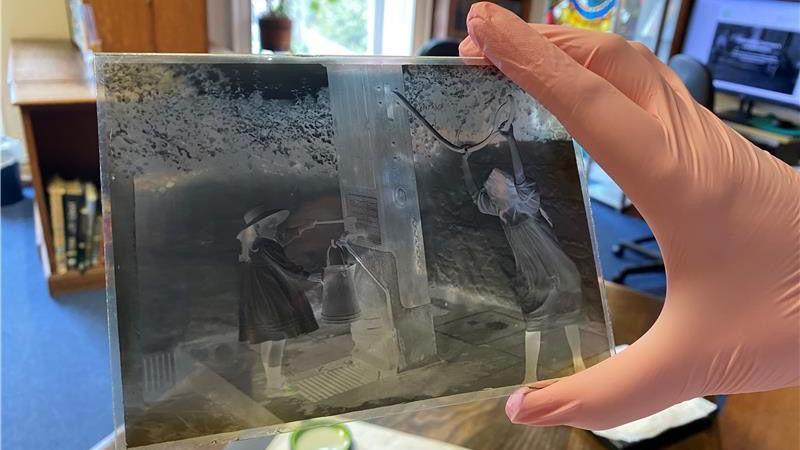
- Published9 January
